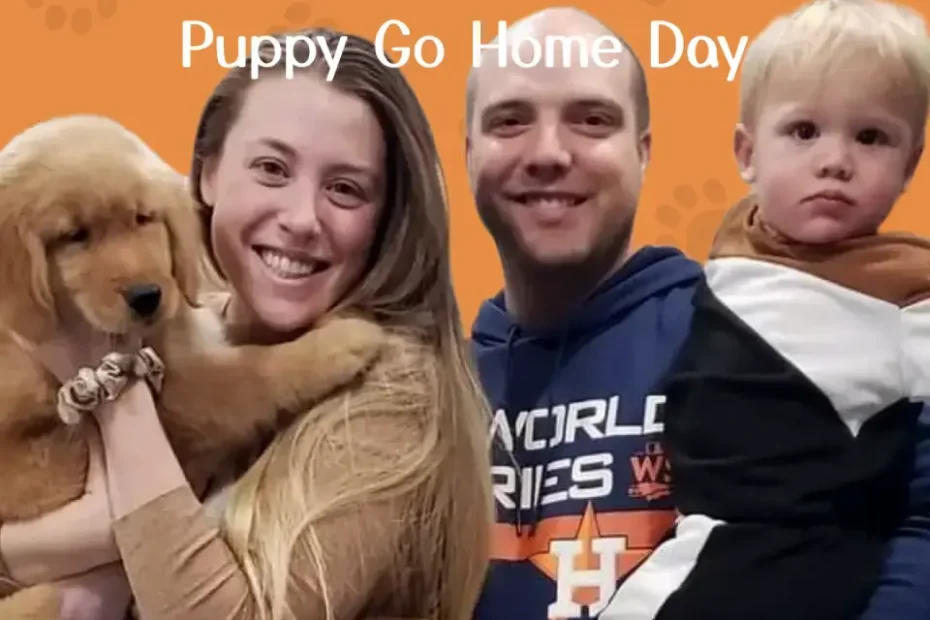Surviving the First 24 Hours
Go home day is here, and it’s time to take your new golden retriever puppy home! While it’s an exciting moment, it can also feel a little overwhelming. No worries though here at Golden Crest Retrievers, we’re here to guide you through the first 24 hours with your new fir baby to help make the transition as smooth as possible and survive the first day.
Be Prepared
Being prepared can make or break an experience. You can set yourself up for success by making sure you have the necessary puppy supplies.
Buy New
Everyone loves a good deal, but the risk is not worth the “savings”. Golden Retriever puppies are not fully vaccinated until about 16 weeks of age, depending on your veterinarian’s recommended vaccine schedule.
Buying new dog toys and crates will reduce the risk of your young pup getting sick.
Plan to wash everything, even if it’s new from the store.
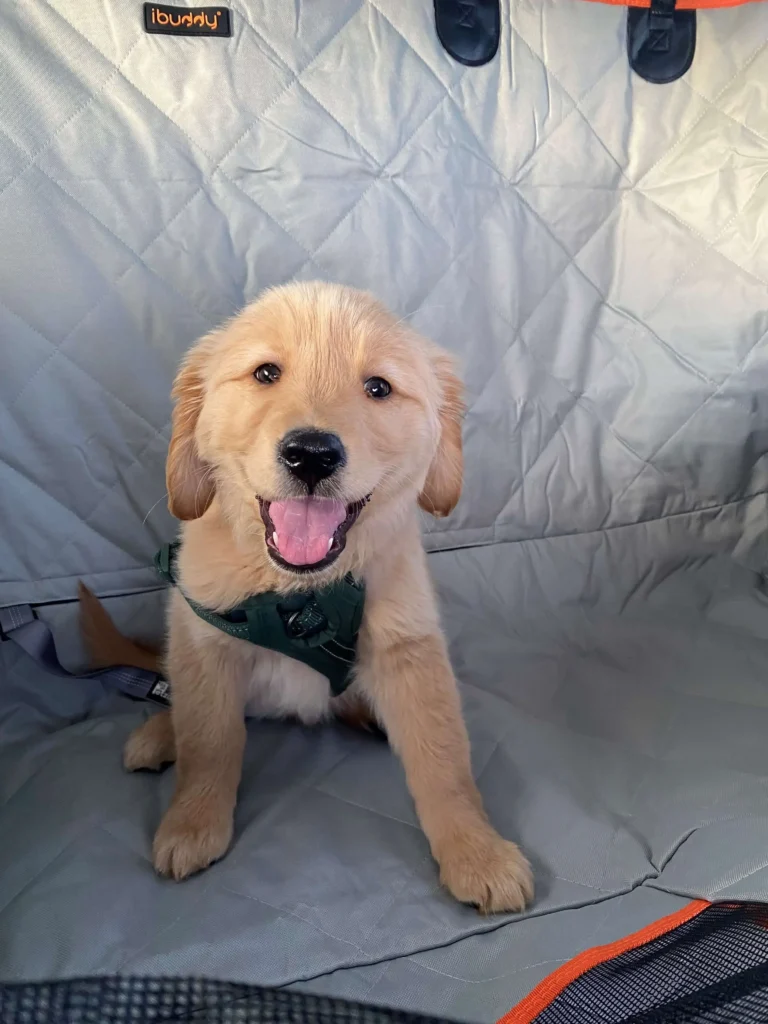
The Drive Home
The drive home with your golden retriever puppy is a blend of excitement and nervous energy. Bring a crate to keep them safe on the drive home.
If possible, bring someone along to help you tend to your puppy’s needs while you are driving.
Keep the environment quiet and soothing. Play soft music or talk gently as you navigate the roads. Now is not the time to be jamming out to your favorite songs. This initial bonding time is essential for establishing trust.
To reduce the chance of car sickness, try to plan your route around the puppy and take a route with fewer curves and rough roads when possible.
Go Straight Home
After you buckle up your puppy in the car, keep driving until you get home. Now is not the time to stop at the store to let your puppy pick out their first toy.
Most parents would not dare stop at Walmart on their way home from the hospital with their newborn baby.
Avoid stopping for potty breaks. Young puppies are not potty trained and will likely relieve themselves in the crate on the way home. This is much better than stopping at a truck stop or park, where the pup is at an increased risk for contracting parvovirus.
Bring Home a Familiar Scent.
Bringing home a familiar scent can ease the transition for your golden retriever puppy. It’s comforting and reassuring, acting as a bridge to their previous environment.
There are many benefits to bringing home a blanket or stuffie with the mom or litter mate’s scent on it, and that is why Golden Crest Retrievers send home a blanket and snuggle puppy stuffie with mom or litter mate scents.
The smell of littermates and momma on the items we sent home can help calm pup during those first few hours in an unfamiliar place.
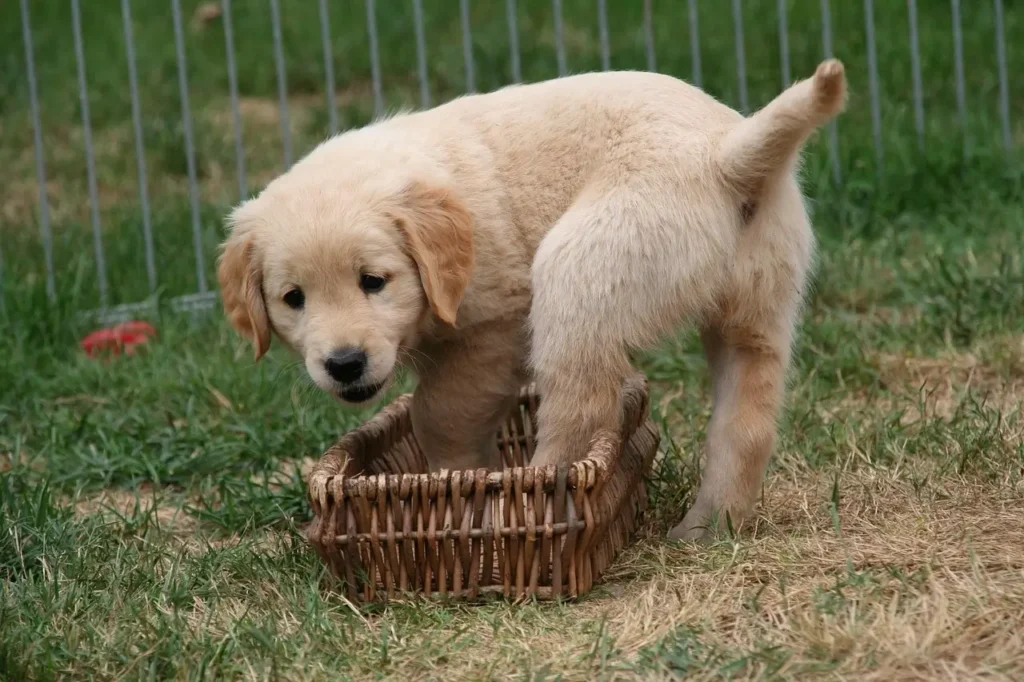
Arriving Home
As you pull into the driveway, excitement fills the air. Your golden retriever puppy is about to enter a home with new smells and experiences.
Once inside, keep things calm and quiet. Avoid overwhelming your puppy with too much noise or activity right away. Allow them to explore at their own pace. If you have small children, please remind them to be calm around the puppy at first.
Familiarize your furry friend with important spaces like where they’ll eat, sleep, and play.
Every sight, from furniture legs to curtains swaying in the breeze, will be fascinating. Their curiosity will lead them as they begin to understand this new home—a place ready to be filled with love and joy.
Introduce Potty Area
As soon as you bring your fur baby home, it’s a good idea to introduce the potty area as soon as you take him out of the vehicle. Seriously, don’t let the pups down unless it’s safe to tinkle there. Puppies have litter tanks and need frequent potty breaks.
Take them outside or to a designated spot in your yard where they can do their business. This helps establish a routine early on.
Remember to offer a potty break to the puppy every time you take it out of something or change its floor texture. This action often stimulates them to relieve themselves.
Use consistent commands like “go potty” so that your pup associates the phrase with the action. Praise them enthusiastically when they succeed; positive reinforcement is key.
If accidents happen indoors, stay calm and avoid scolding. Redirecting their attention to the outdoor potty area reinforces where they should go instead.
Keep an eye on signs of needing to go out circling, sniffing, or whining. These are all cues that it’s time for another potty break. Once you learn this elimination communication the smoother house training will be for both of you!
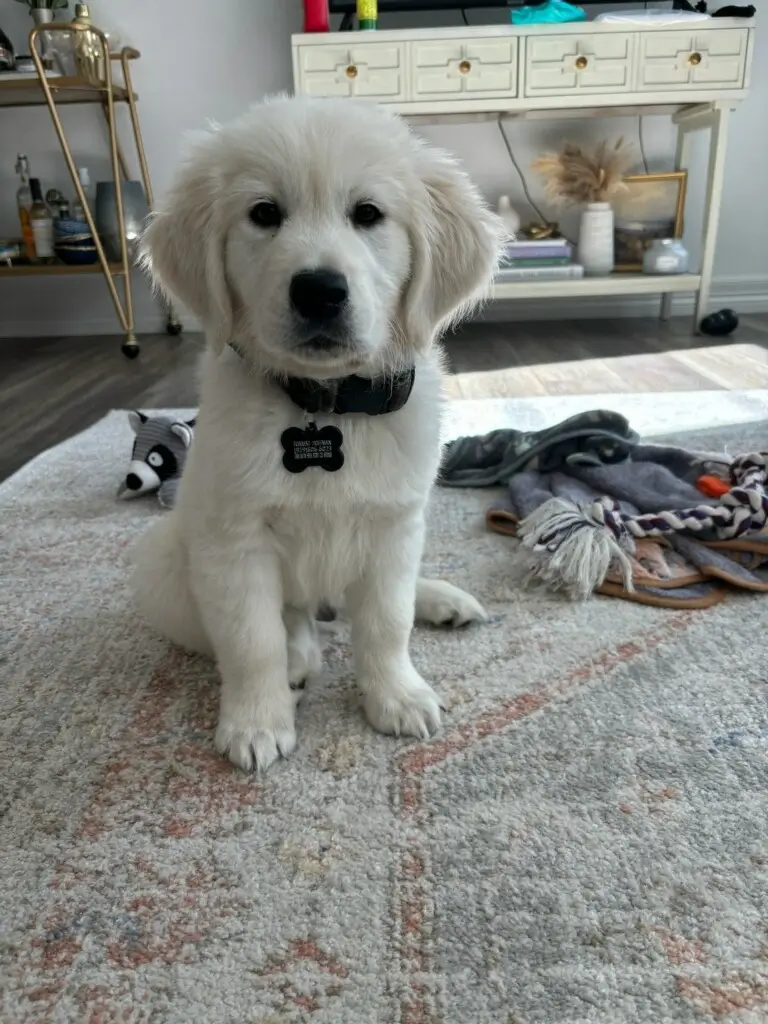
Puppy’s Space
It’s time for the golden retriever puppy to explore their new territory. Start by gently placing them in a designated area filled with soft bedding and toys. This will be their safe haven.
This would be a good place to place the puppy’s crate and where they will take their naps.
Encourage curiosity by allowing your puppy to sniff around.
Keep interactions positive during this introduction phase.
Offer food right away to help calm the nerves.
Golden Crest Retrievers will limit or restrict food and water before the puppy is picked up to reduce car sickness on the drive home. So when you get home your puppy may be motivated to eat.
Safe Puppy Play Area
It is important to create a safe play area for your golden retriever puppy. This space should be close to where you spend most of your time, such as the kitchen, allowing for easy supervision. If you can’t see them, the puppy space is too big.
Use baby gates or exercise pens to define the boundaries. Don’t let them explore the whole house before they are potty trained. Free range is a privilege reserved for fully potty-trained dogs. These barriers keep your curious pup contained while giving them room to explore safely.
Include interactive toys and chew items that stimulate their mind and help with teething discomfort.
The puppies are not fully potty trained but have been using a litter box-like system, which, if implemented in their new home, could help keep the area cleaner in this early transition stage.
Keep an eye on what is placed in the puppy play area. Sometimes, children like to share their toys even if it’s not the best puppy toys. This may or may not be something that is safe for the pup. Even something like a sock can cause major issues.
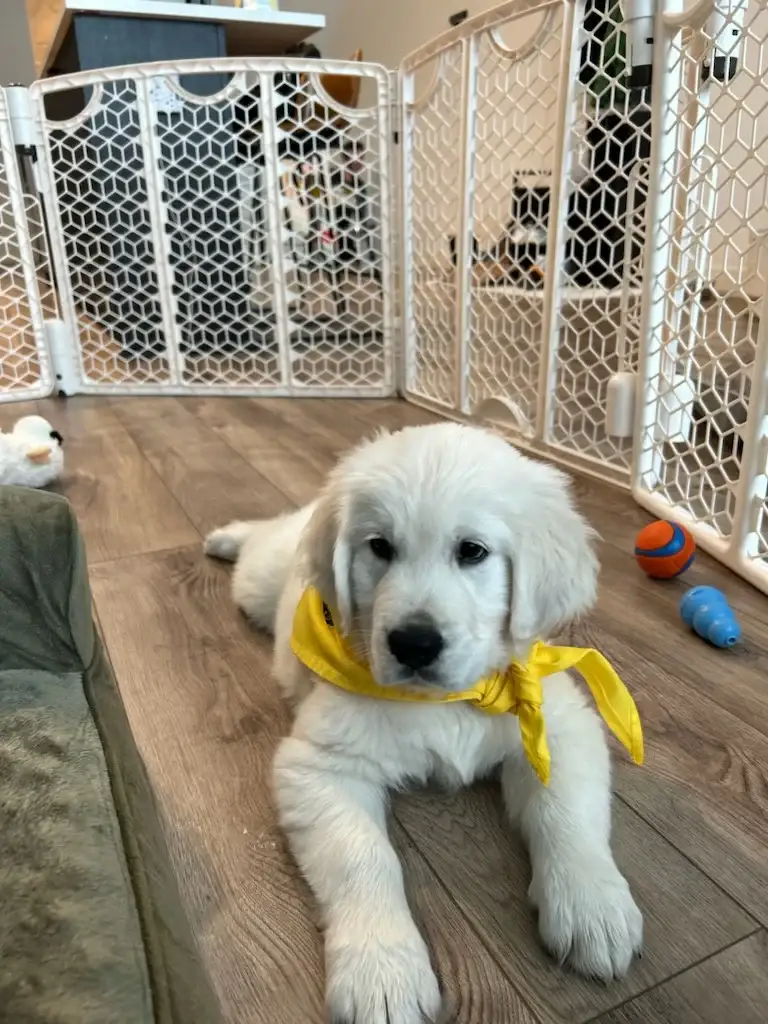
Sleep, Potty, Play, Repeat
The first few days with your golden retriever puppy are all about establishing a routine. Sleep, potty, play—then repeat. This cycle helps your new furry friend adjust to their environment.
After a good nap in their crate, it’s time for a quick potty break. Take them outside immediately so they can learn where to go, and praise them when they do their business.
Next comes playtime! Puppies are used to romping with their siblings, so now is a good opportunity to bond with them as you fill that new void in their lives. Now is a good time to be that friend the puppy needs.
Once playtime winds down, it’s back to the crate for another snooze. Puppies need plenty of rest to grow strong and healthy. Remember that this rhythm is crucial in helping your pup feel comfortable in their new home.
Now, while the puppy is tired, it’s a great time to start crate training by placing the puppy in their crate at naptime.
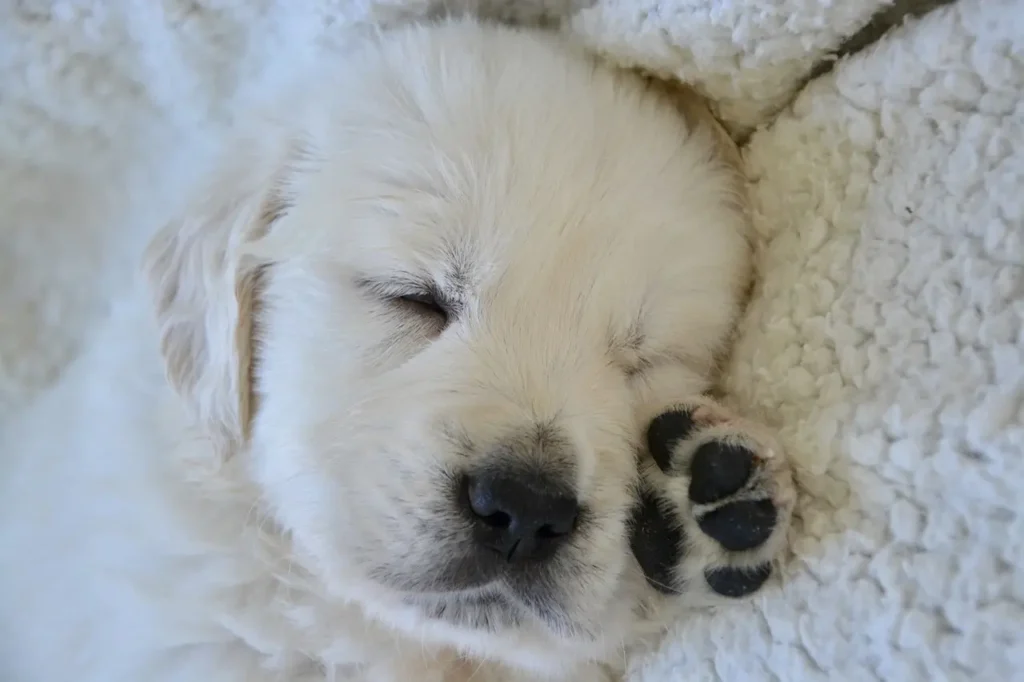
Main Focus: Adjusting to their new home
Its understandable how excited new puppy parents may be to get to try out all these training techniques they have been learning about. It is important to keep in mind that this is day one of leaving the nursery. The puppy has a lot to get used to, from the smells and people to being the only puppy and even routine. Keep in mind that the most important thing is to not over-stress the puppy and let him get used to his new home.
Puppies need a lot of sleep. If the puppy is sleeping, then let them keep sleeping. There will be plenty of time to play and get those zoomies in.
Daytime Crate Training
A dog crate can be a wonderful tool for your new companion. It offers a safe space for them to relax and recharge.
Dogs do learn to appreciate and like their crate, just like wolves like to sleep in dens.
Start by making the crate inviting with their blanket, which should have mama’s scent. This familiar scent can make all the difference in helping them feel at ease.
Monitor their sleepy cues—yawning, less active play, or looking for a dark place to lay are signs they need that much-needed nap.
Place your fur baby in their crate once they are sleepy. They may not appreciate the crate initially, but just keep it near you as you busy yourself in the kitchen. Puppies will need to get used to not being the center of attention at all times and will eventually fall asleep.
There is a fine line between tough love and too much stress for the pup. Crate training is important for a puppy’s safety, but if it is too stressful for the pup, then take a break and try again another time.
Young golden retrievers sleep for about 18-20 hours a day, so don’t worry if they take a lot of long naps; this is normal.
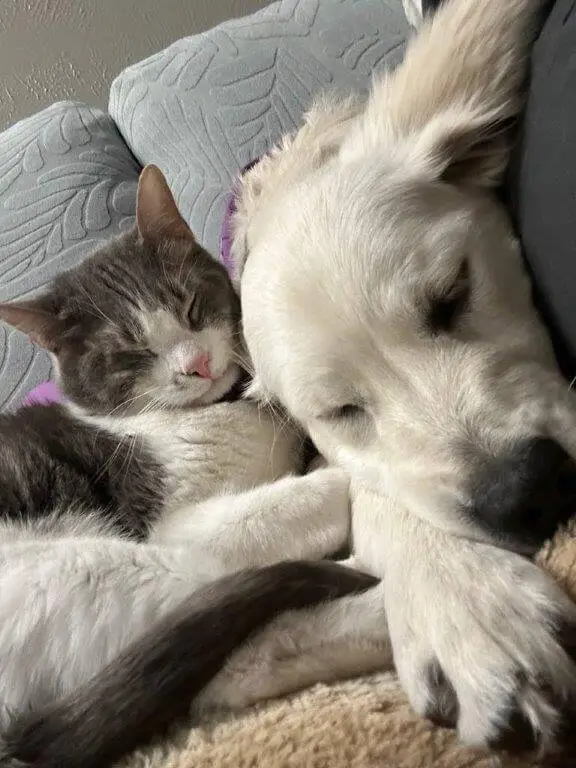
No Long Naps Before Bedtime
Avoid letting your golden retriever puppy indulge in long naps as bedtime approaches. While puppies need their beauty sleep, a lengthy snooze just before nightfall can disrupt their nighttime routine.
Plan for extra stimulating playtime right before bed in hopes of tiring him out and helping him sleep through the night.
A playful romp or some gentle training exercises can also tire them out without overdoing it. Golden retriever puppies need their exercise. Remember: happy and tired puppies make for peaceful nights!
Last Call
When bedtime approaches, remove the food and water. This helps reduce the number of late-night potty breaks the puppy will need until morning. Look on the bright side; you will get to see those beautiful starry nights in Colorado.
Sleep Training Puppy
Sleep training your golden retriever puppy is essential for a harmonious home. Establishing a routine helps them understand when to sleep and when it’s time to play.
Begin by establishing a consistent bedtime routine. This can include quiet time, gentle petting, or soft music. Puppies thrive on a schedule.
The crate can be used as their personal space. Make it cozy with bedding that has familiar scents, reinforcing safety and comfort.
Now is a great time to bust out the heartbeat snuggle puppy stuffie that helps reduce anxiety.
If they wake up during the night, gently encourage them to go outside for potty breaks but keep interactions minimal—this keeps it clear that nighttime is for sleeping.
A well-rested puppy equals well-rested puppy parents, which leads to a happier household!
Sleep Trumps Potty: don’t wake a sleeping puppy
When you bring home a golden puppy, sleep is king. Puppies need plenty of rest.
Waking a sleeping puppy can disrupt their natural sleep cycle.
If you’re concerned about potty breaks during these nap times, remember that most puppies will signal when they need to go out. Trust your instincts; if they’re sound asleep, allow them the chance to recharge.

Heartbeat Snuggle Puppy Sleep Aid
The heartbeat snuggle puppy can be a game-changer for your golden retriever puppy’s sleep routine. These plush toys mimic a heartbeat’s sound, which helps calm them down before bed.
When you first bring your new furry companion home, everything is unfamiliar and possibly scary.
The biggest hurdle is leaving their littermates. Their siblings provided a warm sleeping buddy, a playmate, and extra security in new and scary situations.
The heartbeat snuggle puppy stuffie will mimic their litter mates while sleeping with its vibrating heartbeat, size, and shape. Puppies love to cuddle and lay on top of one another, and this stuffie is a wonderful tool.
It’s all about making the pup comfortable and less stressed. If they need you to hold them until they fall asleep the first night, that’s fine, too.
Commonly Asked Questions
How much do puppies sleep?
On average, a golden retriever puppy sleeps 18 to 20 hours a day, including both nighttime slumber and daytime naps. Their little bodies are working hard, so rest is crucial.
You might notice your pup dozing off during playtime or after meals. It’s completely normal!
Creating a cozy sleeping environment will help your puppy feel secure while resting. A crate can serve as their haven where they can retreat for some quality shut-eye.
Is diarrhea normal after relocating?
When bringing home your fur baby, you might notice some changes in their digestive system. It’s not uncommon for puppies to have diarrhea, especially during the first few days in their home.
The stress of moving can affect a puppy’s gut health. Additionally, dietary changes like new treats can lead to loose stools. Golden Crest Retrievers discourage families from changing the puppy’s diet before they have fully adjusted to their new home. That is why Golden Crest Retrievers send home a big bag of puppy’s current dog food when they leave the nursery.
It may be a temporary adjustment phase if your puppy has mild diarrhea but is still active and eating well. However, if the diarrhea persists and is accompanied by other symptoms like vomiting or lethargy, it’s best to consult your veterinarian ASAP.
The puppy’s life has changed so much in the past 24 hours but their diet is one that does not have to change and can be familiar and comforting to them.
FortiFlora is a probiotic that can be added to their food to help reduce diarrhea symptoms.
Remember that this, too, shall pass as they settle into their new home routine!
Hope You Master the First 24 hours
I hope these tips set you up for success with your new golden retriever puppy. Remember to take everything in stride. You are learning to care for your pup just as they learn to adjust to their new home.
Stay consistent and your puppy will soon learn.
Enjoy every minute because it will go by faster than you think!
You May be Interested in These Articles
Preparing for a Golden Retriever Puppy: Your Complete Guide
The Joyful Benefits of Owning a Golden Retriever Puppy
Best Toys for Golden Retriever Puppies
Coloring Pages of Golden Retriever Puppies
